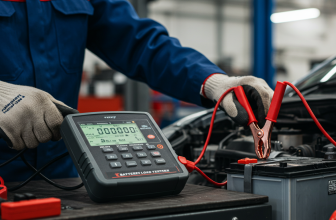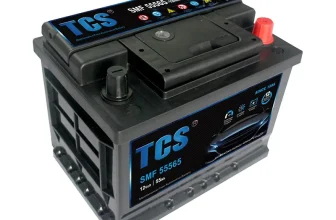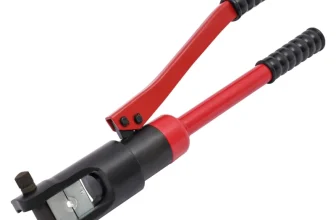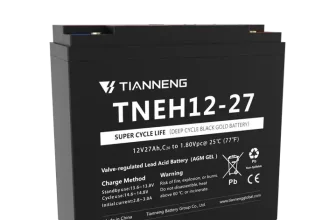An 8D battery is a type of rechargeable battery that is renowned for
its remarkable energy storage capacity and compatibility with heavy-duty
applications. The term “8D” refers to the battery’s size classification,
marking it as one of the largest commercial batteries available. These
batteries are not only notable for their substantial dimensions and
energy-holding potential, but also for their usage in various
industries. Be it in marine operations or powering recreational
vehicles, commercial trucks, and even solar power setups, 8D batteries
have undeniably become a crucial part of these sectors. Their extensive
applications, excellent longevity, high safety measures, and resistance
to overcharging are among the factors that continue to make 8D batteries
an essential power solution. This article will delve into the specifics
of an 8D battery, its varieties, key features, and its role in different
industries.
Importance of 8D
Battery in various industries
8D batteries hold significant importance across various industries
due to their superior attributes of power, long lifespan, and
durability. Their high energy density is crucial in industries that
require constant and dependable power sources, such as the marine
industry, recreational vehicles, and commercial transport. In the
renewable energy sector, particularly in solar power setups, 8D
batteries play a crucial role in storing solar energy and ensuring a
steady power supply during cloudy or non-sunny days. This has made them
a key component in not only environmental sustainability efforts but
also in ensuring continued functionality in vital areas of industry and
transportation. Having an exceptional safety feature, these batteries
also assure the security of the systems they power, a feature that is
paramount in every sector of their use. Overall, the 8D battery’s
robustness, dependability and safety make it a powerful and vital tool
across multiple industries.
What is an 8D Battery?
Detailed description of 8D
Battery
An 8D Battery, named for its distinctive shape and size, is a type of
lead-acid battery typically used for a range of heavy-duty applications.
Its ‘8D’ nomenclature stands for “eight dimensional” which references
the battery’s specific measurements: length (20.75 inches), width (11
inches), and height (10 inches).
8D batteries are designed to provide high amperage output and a
substantial reserve capacity in a single, large package. Internally,
they feature lead plates submerged in an electrolyte solution that
induces a chemical reaction to generate electrical power.
These batteries’ capacity derives from their large size, and they
typically hold a charge in the range of 200-255 amp hours, with a
cranking amperage often well over 1000 amps. Its high power capacity
combined with sturdy, resilient construction makes the 8D battery a
popular choice for applications where reliable, long-lasting power is
required.
Given their size and power, 8D batteries are understandably heavy,
with weights commonly ranging between 120 and 160 pounds depending on
the type and specific model. Despite their heft, their durability and
reliability make them a preferred choice for many commercial and
industrial uses.
Specific
dimensions and weights of 8D batteries
An 8D battery is an impressive behemoth in the world of batteries due
to its significant size and weight. These dimensions are what set them
apart and make them suited to their specific uses in various fields.
Specifically, it measures roughly 20.75 inches in length, 11 inches in
width, and 8 inches in height. These sizes, although hefty, fit
perfectly into the designated battery compartments of commercial
equipment, RVs, and marine vessels.
It’s this size that leads to its impressive weight. An 8D battery
usually weighs approximately 130 to 160 pounds, depending on its
specific type and the materials used in its construction. This weight is
due to the battery’s large size and the substantial amount of material
needed to create such an influential power storage device. Due to their
size and weight, handling and installation of 8D batteries usually
require more than one person or specialized equipment.
Different Types of 8D
Batteries
Wet Cell (Flooded) 8D
batteries
Wet Cell or Flooded 8D Batteries are a traditional type of battery
that is commonly used for a wide variety of applications. This style of
battery contains a liquid electrolyte, typically sulfuric acid, which is
free flowing within the battery casing. The electrolyte facilitates the
flow of electrical charge between the battery plates to generate
electric power.
One prominent characteristic of these batteries is that they require
consistent maintenance. This involves regularly checking and topping up
the electrolyte levels, and ensuring the vent caps are clean and
secured. Despite these requirements, wet cell batteries are often
preferred due to their cost-effectiveness and high discharge rate.
Of importance to note however, wet cell 8D batteries do come with
certain drawbacks. They need to be kept upright to avoid the risk of
spillage because the electrolyte fluid is loose within the battery. They
are also more susceptible to damage from vibration or impact, making
them less ideal for rough terrain or marine use. Nonetheless, they can
serve as a reliable and cost-effective battery solution for specific
needs.
Gel Cell 8D batteries
Gel Cell 8D batteries represent an upgrade from traditional wet cell
(flooded) batteries. The distinguishing feature of these batteries is
that they contain a gelatinous electrolyte substance. This silica-based
gel delicately suspends the battery acid and allows the movement of ions
from the negative to the positive plate during discharge and vice versa
during charging.
The sealed nature of Gel Cell 8D batteries makes them leak-proof and
generally maintenance-free. Furthermore, the gel electrolyte
significantly reduces the rate of evaporation, lending to the battery’s
overall improved lifespan as compared to wet cell variants.
Gel Cell 8D batteries are also more resilient in a range of
conditions. For instance, they are highly resistant to shock and
vibration damage and can perform admirably even in high-temperature
circumstances. Particularly, these batteries can be mounted in any
orientation without fear of spilling. However, it’s important to note
that these batteries require special charging rates to prevent excess
gas from damaging the cells.
In essence, Gel Cell 8D batteries provide an excellent solution for
heavy-duty, deep-cycle applications due to their robust construction,
reliable performance, and wide range of operational benefits.
Absorbed Glass Mat (AGM) 8D
batteries
Absorbed Glass Mat (AGM) 8D batteries represent the next step in the
evolution of 8D batteries, combining top-notch efficiency with a
superior maintenance-free design. AGM batteries work by having the
electrolyte absorbed into a fiberglass mat situated between the
battery’s plates. This results in an extremely efficient form of energy
production, as the electrolyte is always in immediate contact with the
metal.
This design lends itself to some distinct advantages. Firstly, the
lack of free-flowing liquid inside the battery makes AGM 8D batteries
largely immune to leakage, even when damaged. This feature also ensures
optimal performance in a broad range of temperatures, allowing it to
operate flawlessly, even in severe weather conditions.
The internal resistance in AGM 8D batteries is significantly lower
compared to its counterparts, enabling them to deliver and absorb higher
rates of amperage compared to other 8D battery types. As a side effect,
these batteries tend to recharge quite rapidly and efficiently.
While the upfront cost of AGM 8D batteries can be higher than other
battery types, their advanced technology and long lifespan can provide a
more cost-effective solution over time. That’s why they are an excellent
choice for applications that require reliable, high power delivery and
for those seeking a maintenance-free battery option.
Key Features of 8D Battery
High energy density
The 8D battery boasts a formidable feature – its high energy density.
Energy density refers to the amount of energy stored in a given system
or region of space per unit volume or mass. In simpler terms, it
determines the lifespan of the battery between charges. The 8D battery
excels in this aspect, being able to store and deliver a substantial
amount of power compared to its size and weight. This quality is
particularly beneficial in applications where space and weight are
critical factors, such as marine, recreational vehicles, and commercial
trucks. The high energy density of an 8D battery ensures that it can
supply power for a prolonged period, making it a reliable choice for
heavy-duty applications.
Long-life span
8D batteries are renowned for their longevity, further enhancing
their cost-effectiveness and appeal in various industries. Designed for
robust use over extended periods, these energy powerhouses are known to
exceed the typical lifespan of standard batteries. This long-life span
is primarily due to the substantial size of the battery, and its
advanced build quality – traits that contribute to its superior energy
storage and discharge optimization. A well-maintained 8D battery can
last years, often outlasting the equipment it’s installed in. This is
vital in settings like marine applications or commercial trucking where
durability, reliability, and performance over time significantly impact
operations. However, the life expectancy of these batteries can vary
based on usage, maintenance, and other environmental factors.
Enhanced safety features
The safety features that are integrated into 8D batteries make them
increasingly preferred in various industries. One of the noteworthy
safety traits of these batteries is their design security against
potential gas explosion. With their sealed construction, 8D batteries
greatly reduce the risk of explosive gas emission, an issue commonly
associated with traditional flooded types.
Another attractive safety feature is their spill-proof
characteristic. No matter what position you place an 8D battery, there’s
no need to worry about leaks of hazardous acid thanks its sealed design.
This not only ensures user safety but also protects the integrity of the
equipment in which the battery is installed.
8D batteries also come with a built-in mechanism for pressure
regulation. In cases of overcharging or undercharging, this feature
helps keep the pressure within the battery at a safe level, preventing
potential damage and promoting longevity. Most additionally incorporate
a short circuit protection feature, which prevents high currents from
causing harm.
These enhanced safety features of 8D batteries allow them to retain
their dependability and efficiency, even under harsh and unpredictable
conditions, making them a reliable source of power in various
applications.
How they’re resistant to
overcharging
8D Batteries have a remarkable resistance to overcharging — a
significant feature that sets these batteries apart from their
counterparts. This is primarily due to their design and the advanced
internal technology they employ.
When a battery is continuously overcharged, it can lead to
exaggerated gassing (when the electrolyte breaks down into hydrogen and
oxygen gases due to overcharging), electrolyte loss or sometimes even
cause the battery to explode. 8D batteries are designed with this in
mind and incorporate specific safeguards to protect against overcharge
conditions.
In the case of flooded 8D batteries, for instance, overcharging can
cause electrolyte dilution, which decreases the battery’s ability to
hold a charge. To counteract this, checking electrolyte levels and
adding distilled water as needed is a common approach.
As for Gel Cell and Absorbed Glass Mat (AGM) 8D batteries, they have
inbuilt overcharging protection that is facilitated by their sealed
designs. Their very construction limits gas emissions and prevents
electrolyte loss. Moreover, these batteries use valve-regulated
lead-acid technology. When the pressure within these batteries increases
due to overcharging, valves open to release excess pressure and prevent
damage. The inner gel or fibreglass matting inside these batteries also
asserts a constant pressure against the battery plates, limiting the
amount of space for gasses to accumulate, reducing the risk of a
dangerous failure.
This excellent resistance to overcharging not only increases the
safety factor of these batteries but also extends their lifespan, making
them ideal for applications that require dependable, long-lasting power
sources.
Industries that Use 8D
Battery
Marine industry
The marine industry heavily relies on 8D batteries due to their
robust nature and high energy density. These batteries are often found
in large sea vessels where there is a massive demand for consistent and
reliable power supply. In boats, they power various electric systems
including the navigation, communication systems, lighting, and other
onboard electrical applications.
8D batteries are especially favored due to their resistance to the
harsh marine environment. Their rugged construction and sealed design
withstand corrosion from salty sea air and vibration from engine
operations. What’s more, the batteries’ high current output and deep
cycle capability also make them well-suited for powering trolling motors
and other demanding marine applications.
Given these attributes, it’s no surprise why 8D batteries have become
an essential companion on marine adventures. They not only ensure marine
operations are efficient but also contribute to the safety measures on
board. Whether for casual boating or commercial fishing, an 8D battery
can provide long-lasting reliable power to keep a vessel operating
smoothly in waters.
Recreational vehicles (RVs)
Recreational Vehicles (RVs) extensively rely on the power provided by
8D batteries. The ability of these batteries to store large amounts of
energy and their durability and reliability make them suitable for RVs,
where consistent and sustained power supply is crucial. Whether it’s
needed for lighting, refrigeration, heating, or charging other
electronic devices, the 8D battery can easily handle these loads. Due to
the nature of RVing, often in remote settings and off-grid locations, it
is important to have a reliable battery that can hold its charge for
extended periods. With its high energy density and robust design, the 8D
battery serves as the heart of an RV’s electrical system. Furthermore,
the long-life span of 8D batteries reduces the need frequent
replacements, another crucial factor considering the challenges in
accessing battery replacement services while on the road.
Commercial trucks
Commercial trucks are one of the major sectors that rely
significantly on 8D batteries. Driving a commercial truck involves not
just getting from point A to B but also powering numerous on-board
systems like electronic logging devices, refrigeration systems, lift
gates, and interior lights. This is where 8D batteries come into
play.
Specifically designed for heavy-duty applications, these batteries
provide the power needed to run such systems efficiently. The
long-lasting nature and high energy density make them an ideal choice
for commercial trucks, facilitating uninterrupted power supply for
longer journey durations. Furthermore, the enhanced safety features,
including resistance to overcharging, are pivotal for commercial truck
operations to minimize risks related to battery failure or
accidents.
Whether it’s for long-haul trucks covering cross-country routes or
local delivery trucks that make frequent stops, the 8D battery’s
consistent performance and durability ensure smooth operations. The
trend in the commercial trucking industry towards increased power
demands only underscores the importance of potent batteries, such as the
8D variant.
Hence, the use of 8D batteries in commercial trucks is not a mere
choice; it is a necessity for delivering optimum performance in our
contemporary, power-hungry commercial trucking landscape.
Solar power setups
Solar power setups frequently rely on 8D batteries as a crucial
component for their operations. These setups require batteries that can
efficiently store energy generated by solar panels during the day for
use at night or during periods of low sunlight. The high energy density
of 8D batteries make them an optimal choice for this role. Moreover, 8D
batteries have a long life span and can withstand varying weather
conditions, making them well suitable for outdoor environments of
different kinds, similar to many solar power setups. They also have
relatively low self-discharge rates which makes them ideal for
applications like this that require batteries to hold their charge for
extended periods. Their resistance to overcharging also proves
beneficial as solar power generation can vary greatly. Therefore, its
benefits of high storage capacity, lifespan, and sustainability factor
make the 8D battery an undeniable participant in solar power setups.
Tips for 8D Battery
Maintenance
Correct charging methods
When it comes to maintaining your 8D battery, the first crucial
aspect to consider is the correct charging method. Like any other
battery, improper charging can lead to reduced lifespan or even
potentially dangerous situations.
It’s significant to know that 8D batteries come with a specific
charging voltage range. A regular 8D battery would typically require a
charging voltage of around 14.2 to 14.6 volts at 20℃ or 68℉. When
charging, it is essential to ensure that the charger voltage does not
exceed the maximum voltage threshold as this could lead to overcharging,
which may subsequently damage the battery.
Another important point is to use a three-stage smart charger. These
chargers are specially designed to work well with 8D batteries. A smart
charger goes through bulk, absorption, and float stages. With this
process, the charger gives out maximum current in the first stage
(bulk), then slows down the rate of charging once the battery is almost
full (absorption), and finally keeps the battery at full charge without
overcharging it (float).
Additionally, never leave the battery discharged for an extended
period as this could damage the battery. Therefore, if the battery gets
low on charge, it’s best to recharge it as soon as possible.
Overall, understanding and applying the correct charging methods can
significantly impact your 8D battery’s longevity and performance.
Avoiding over-discharge
Over-discharge is one of the main reasons for 8D battery’s reduced
lifespan. To avoid this, it is important to monitor the battery’s
discharge rate closely. Ideally, the battery should not be discharged
below 20% of its total capacity. Pushing your battery beyond this point
could lead to irreversible damage and weakening of its ability to hold a
charge.
Use a reliable battery monitor to keep track of the battery’s state
of charge. In the case of 8D batteries used for applications such as
solar power setups, load disconnects are important. These devices
disconnect non-critical loads when the battery reaches a specific state
of charge, helping prevent over-discharge.
Moreover, avoid using any battery-powered equipment or appliance if
the battery charge is low. This will also help prevent the battery
discharge rate from falling below the safe limit. Proper care and
maintenance in this regard go a long way in increasing the longevity of
your 8D battery.
Storage tips
Storing your 8D battery properly is crucial for its longevity and
performance. For long-term storage, you should first ensure the battery
is fully charged to prevent sulphation, a common issue that arises when
batteries are stored in a discharged state.
Additionally, it is recommended to store the battery in a cool, dry
environment. Extreme temperatures can be harmful, with cold conditions
potentially leading to freezing and hot conditions accelerating
sulphation and water loss. A climate-controlled space is ideal for
preventing these issues.
You should also consider disconnecting the battery when it’s not in
use for long periods. This minimizes any potential drain on the battery
and helps preserve its charge.
To check the state of your battery during storage, consider investing
in a battery monitor. Monthly checks are essential to maintain the
optimum state of charge and to take necessary action if required.
Avoid stacking batteries on top of each other during storage as it
can lead to external damage and potential leaks. Instead, place each
battery individually with enough space around it for safe handling.
With these storage tips, you can help extend the life of your 8D
batteries and ensure they perform at their peak when you need them the
most. Remember, good battery maintenance can drastically reduce the
chances of battery failure and in turn, save unnecessary replacements
costs.
Conclusion
Recap
of the importance and applications of 8D Batteries
8D batteries have undoubtedly proved their importance and established
a robust presence in several industries. With an impressive energy
density, they offer high power while their dimensions allow them to fit
into a variety of equipment. They are robust powerhouses relied upon for
their long lifespan in industries where constant power supply is
crucial.
Their varied designs, from wet cell to Gel Cell and AGM styles,
further enhance their adaptability. Each type has its unique selling
points, making it suitable for specific applications. No matter the
requirements, be it marine needs, commercial trucking, RV use or energy
provision in solar setups, there’s an 8D battery tailored for the
job.
The safety features these batteries pack also can’t go unmentioned.
They reduce risks of explosions and are resilient to overcharging.
However, despite their strengths, these batteries demand proper
maintenance to serve longer and provide value for their price tag.
Correct charging methods, avoiding over-discharge, and good storage
practices help ensure optimum performance.
Looking into the future, the importance of 8D batteries is likely not
waning soon. They continue being a reliable solution where robust,
durable batteries are needed. As technology continues to grow and
industries evolve, we can only anticipate the continued relevance, if
not a rise, in the use and innovation of these powerful units.
Final thoughts on
future of 8D batteries
As we look towards the future, the potential of 8D batteries seems
boundless. Given their excellent performance characteristics and rising
popularity in several industries, the advancement and demand for these
batteries are expected to continue at a steady pace. As technology
continues to develop and alternative energy sources become more
prevalent, the unique benefits of 8D batteries, especially their
resiliency and superior energy density, are likely to play a pivotal
role. Therefore, the investment in 8D batteries, whether for personal or
industrial uses, is a smart investment for sustainable energy
practices.







